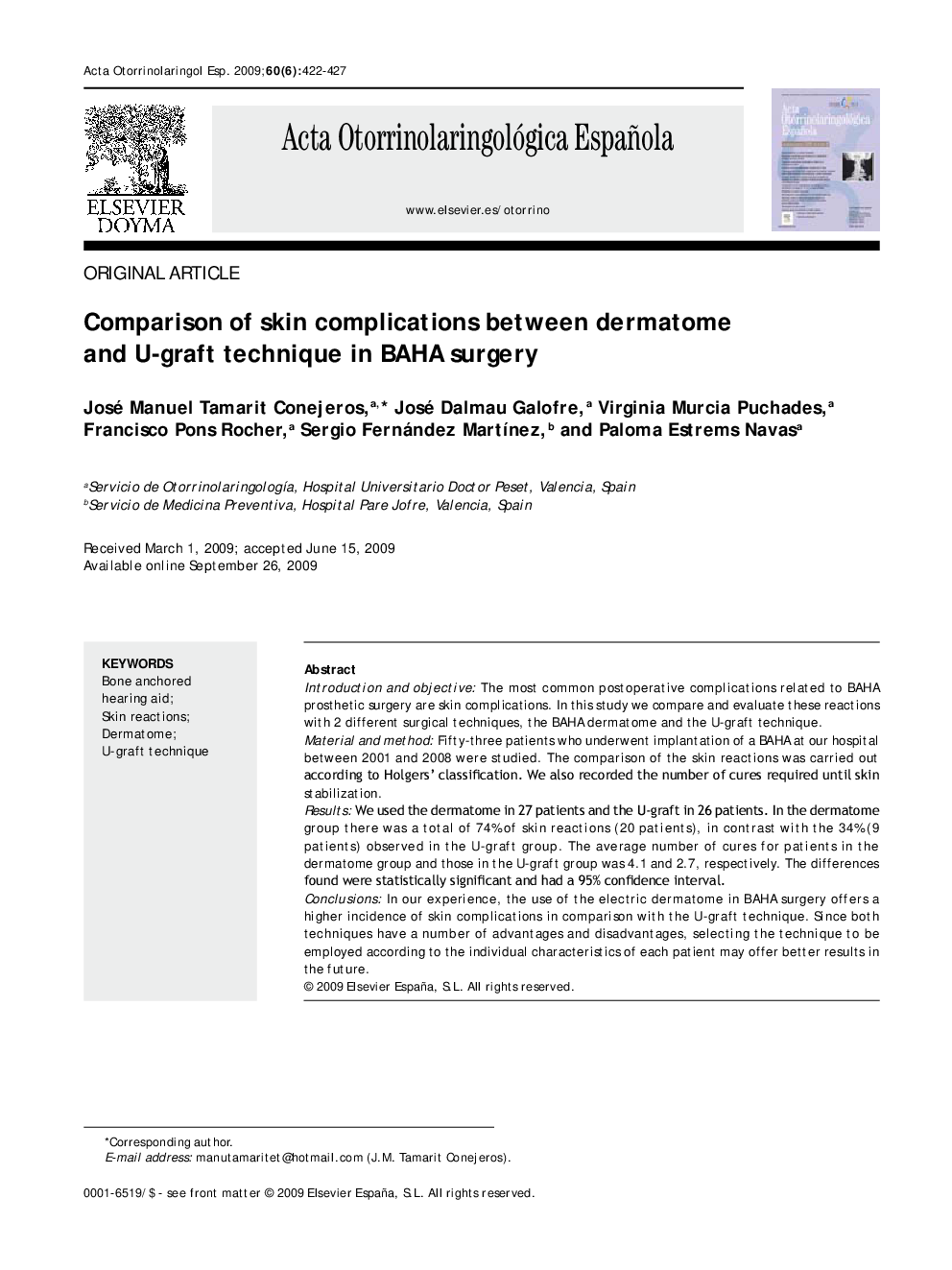| Article ID | Journal | Published Year | Pages | File Type |
|---|---|---|---|---|
| 4101100 | Acta Otorrinolaringologica (English Edition) | 2009 | 6 Pages |
Introduction and objectiveThe most common postoperative complications related to BAHA prosthetic surgery are skin complications. In this study we compare and evaluate these reactions with 2 different surgical techniques, the BAHA dermatome and the U-graft technique.Material and methodFifty-three patients who underwent implantation of a BAHA at our hospital between 2001 and 2008 were studied. The comparison of the skin reactions was carried out according to Holgers’ classification. We also recorded the number of cures required until skin stabilization.ResultsWe used the dermatome in 27 patients and the U-graft in 26 patients. In the dermatome group there was a total of 74% of skin reactions (20 patients), in contrast with the 34% (9 patients) observed in the U-graft group. The average number of cures for patients in the dermatome group and those in the U-graft group was 4.1 and 2.7, respectively. The differences found were statistically significant and had a 95% confidence interval.ConclusionsIn our experience, the use of the electric dermatome in BAHA surgery offers a higher incidence of skin complications in comparison with the U-graft technique. Since both techniques have a number of advantages and disadvantages, selecting the technique to be employed according to the individual characteristics of each patient may offer better results in the future.
ResumenIntroducción y objetivoLas complicaciones dermatológicas son las complicaciones postoperatorias más frecuentes relacionadas con las prótesis BAHA (bone anchored hearing aid). En este estudio comparamos y evaluamos estas complicaciones con dos técnicas quirúrgicas diferentes: el dermatomo BAHA y el colgajo en “U”.Material y métodosSe estudió a 53 pacientes intervenidos en nuestro centro entre 2001 y 2008. La comparación de las complicaciones se realizó según la clasificación de Holgers et al. Hemos registrado, además, el número de curas que se requieren hasta la estabilización de la piel.ResultadosHemos utilizado el dermatomo en 27 pacientes y el colgajo en “U” en 26 pacientes. En el grupo dermatomo hemos tenido el 74% de complicaciones (20 pacientes), que contrastan con el 34% (9 pacientes) con el colgajo en “U”. La media de curas por paciente con el dermatomo y con el colgajo en “U” es de 4,1 y 2,7, respectivamente. Las diferencias encontradas son estadísticamente significativas para un intervalo de confianza del 95%.ConclusionesEn nuestra experiencia, el uso del dermatomo eléctrico en la cirugía del BAHA es un método que nos ofrece un mayor número de complicaciones dermatológicas que el colgajo en “U”. Dado que ambas técnicas tienen una serie de ventajas y desventajas, quizás la selección de la técnica por utilizar según las características de cada paciente de forma individualizada permita obtener mejores resultados en el futuro.
